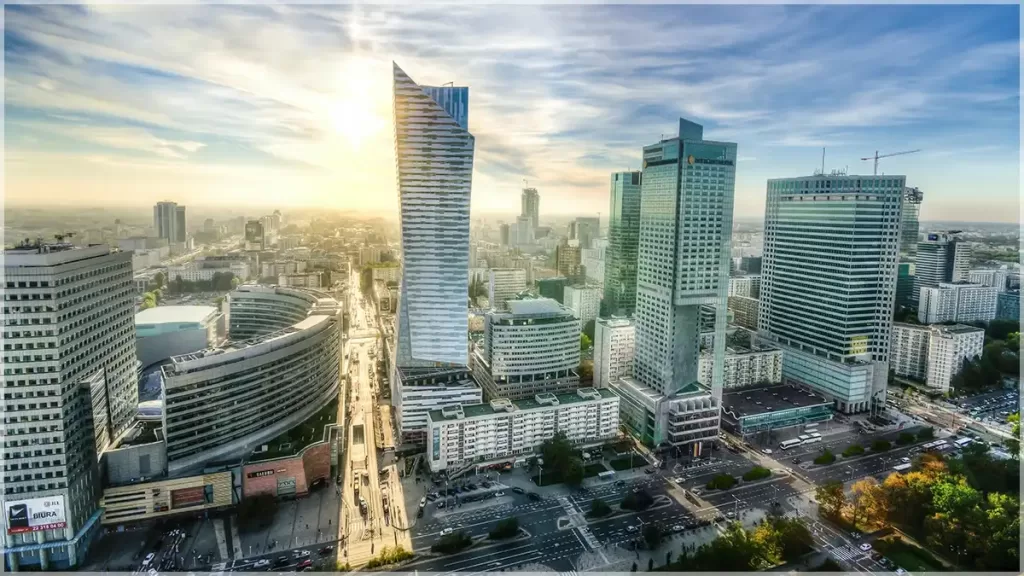When you think of Europe, cities like Paris, London, Barcelona, or Rome probably come to mind. But what about places like Belgrade, Sofia, Minsk, or Chisinau? These cities are also in Europe, yet they belong to a lesser-known part of the continent: Eastern Europe. The contrast between these two regions highlights a significant divide within Europe—Western Europe and Eastern Europe.
Table of Contents
Western vs. Eastern Europe: The Economic Gap

Western Europe is famous for its wealth and developed economies, with a GDP per capita around $68,000. Eastern Europe, on the other hand, has a GDP per capita closer to $14,000. This huge economic difference has been in place for decades, shaped by Europe’s history and geography.
The Post-World War II Divide
To understand why this divide exists, we need to look at what happened after World War II. Europe split into two blocks: Western Europe, which embraced democratic capitalism, and Eastern Europe, which fell under communist rule with Soviet influence.
Western Europe’s capitalist system encouraged innovation and business growth, which helped countries like France and Germany thrive economically. Eastern Europe, however, operated under a system where the government controlled all businesses and resources, limiting growth and entrepreneurial opportunities.
The Fall of Communism and Continued Lag
When communism collapsed in 1991, many Eastern European countries gained independence. Despite this, they struggled to catch up economically with Western Europe. More than 30 years later, Eastern Europe is still behind, largely due to its geography and historical conflicts.
Geography’s Role in Eastern Europe’s Struggles
Eastern Europe’s flat terrain made it more vulnerable to invasions throughout history, which often disrupted economies. Countries like Ukraine and Poland, despite fertile land, faced repeated conflicts that stunted their economic growth.
In Southeastern Europe, mountainous areas have made infrastructure development challenging. This has also slowed economic progress compared to the more geographically favorable Western Europe.
Conflict and Migration in Eastern Europe
Since 1991, many of Europe’s major conflicts have occurred in Eastern Europe. The Yugoslav Wars and the ongoing Russia-Ukraine conflict have not only hurt local economies but have also led to mass migration. Many skilled workers left Eastern Europe for Western Europe, leading to a shortage of talent that continues to slow development.
Western Europe’s Geographic Advantage
Western Europe has long benefited from its strategic access to the sea, with coastlines on the North Sea, Atlantic Ocean, Mediterranean, and Baltic Sea. This maritime advantage allowed countries like Britain, France, and Spain to dominate global trade for centuries and build wealth.
Additionally, Western Europe discovered rich reserves of oil and gas in the North Sea during the 20th century. Countries like Norway and the UK gained a massive economic boost from these resources, while Eastern Europe, with fewer natural resources, remained dependent on agriculture.
Eastern Europe’s Potential for Growth

Despite its challenges, Eastern Europe has great potential for economic growth. Poland, for example, has seen rapid development thanks to reforms and its membership in the European Union. It serves as a model for other Eastern European nations looking to boost their economies.
However, corruption remains a significant problem in many Eastern European countries. High levels of corruption deter foreign investment and limit economic progress. Until these issues are addressed, Eastern Europe will struggle to close the gap with Western Europe.
The Future of Eastern Europe

Although Western Europe has long been an economic powerhouse, some of its nations are facing challenges. For example, Ireland has one of the highest GDPs per capita in Europe, but high living costs are driving people to leave. This suggests that even wealthy Western European countries are not immune to economic difficulties.
On the other hand, Eastern Europe has the potential to grow significantly in the coming decades. With the right reforms, investment in infrastructure, and efforts to reduce corruption, Eastern Europe could finally start catching up to its Western neighbors. The region’s rich agricultural land and emerging industries offer hope for a brighter economic future.
The Global Trade and Natural Resources
The economic divide between Western and Eastern Europe is rooted in history, geography, and political systems. While Western Europe thrived thanks to access to global trade and natural resources, Eastern Europe was held back by conflict, communism, and geographical disadvantages. However, Eastern Europe’s potential for growth is undeniable, and with continued efforts, the region may eventually narrow the gap with Western Europe.
This divide may not last forever—Eastern Europe is slowly rising, and the future looks promising for this often-overlooked part of Europe.


